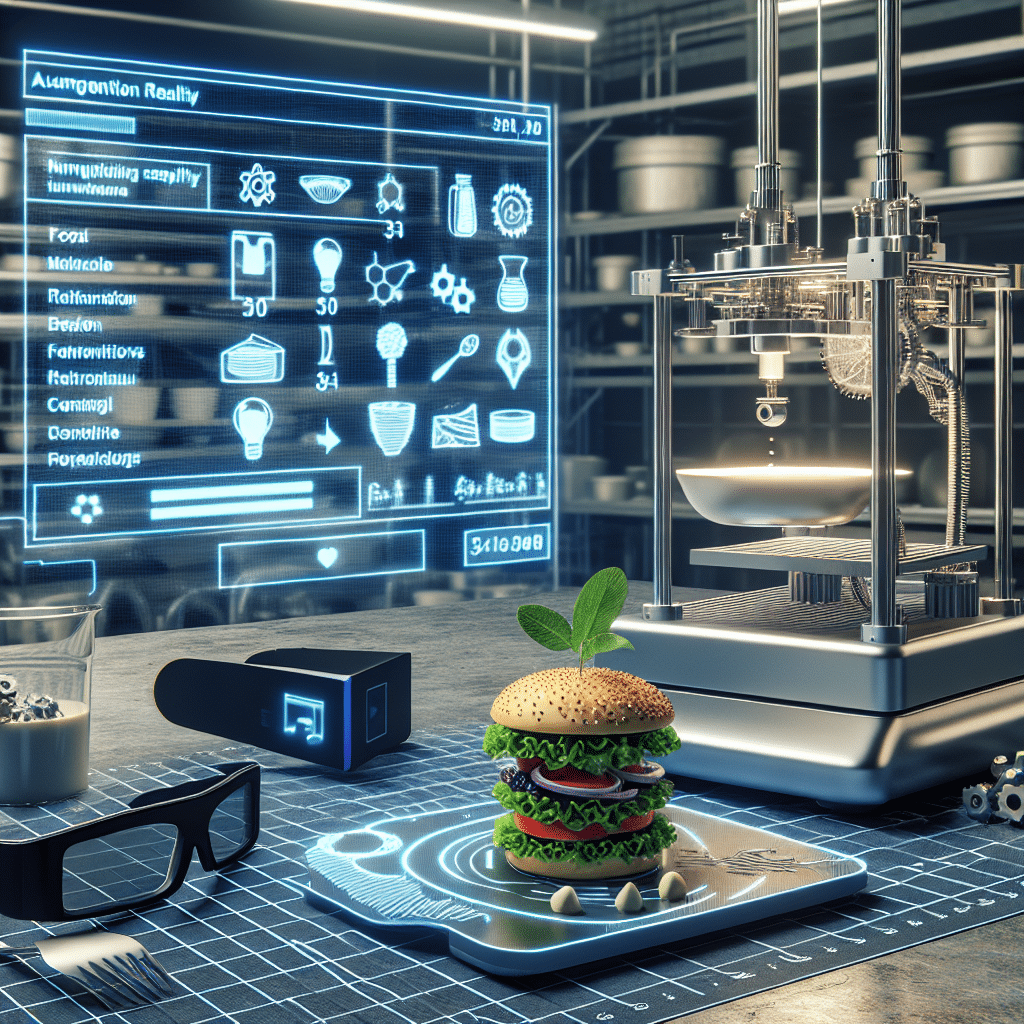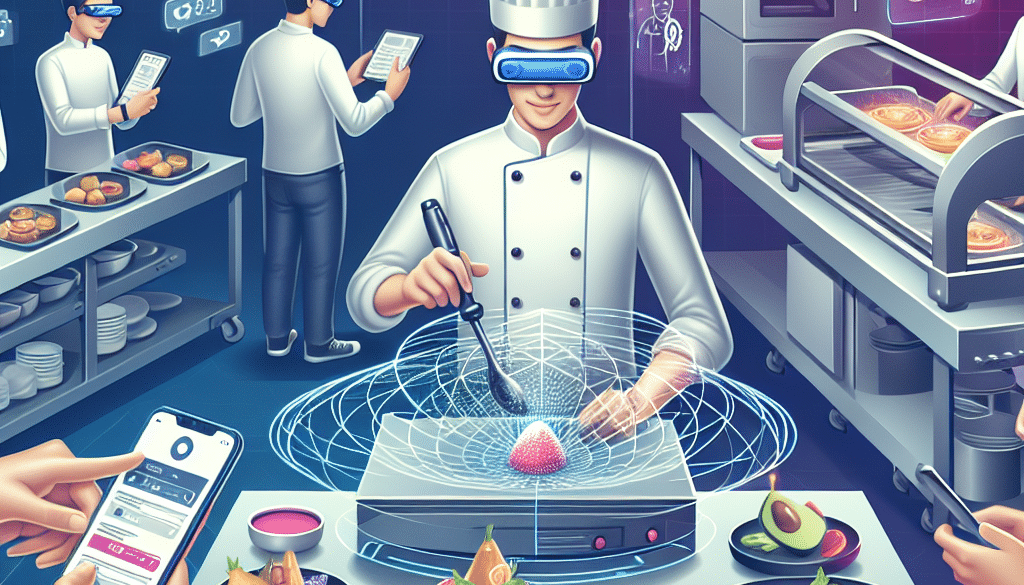Are AR Technologies And 3D Printing In The Food Industry Justified?
-
Table of Contents
- Exploring the Justification of AR and 3D Printing in the Food Industry
- The Emergence of AR in the Food Industry
- 3D Printing Takes Shape in Culinary Creations
- Assessing the Benefits and Challenges
- Benefits of AR and 3D Printing in Food
- Challenges and Considerations
- Impact on the Food Industry and Consumer Behavior
- Statistical Insights and Market Growth
- Conclusion: Balancing Innovation with Practicality
- ETprotein: Enhancing Your Food Products with High-Quality Proteins
Exploring the Justification of AR and 3D Printing in the Food Industry

The food industry is constantly evolving, with technological advancements shaping the way we produce, process, and consume food. Augmented Reality (AR) technologies and 3D printing are two innovations that have sparked interest and debate regarding their applications in the food sector. This article delves into the justification of these technologies in the food industry, examining their potential benefits, challenges, and impacts on consumers and businesses alike.
The Emergence of AR in the Food Industry
Augmented Reality (AR) has made significant strides in various industries, and the food sector is no exception. AR can enhance the dining and shopping experiences by providing interactive and informative content to consumers. For instance, AR menus can display nutritional information, ingredient sourcing, and even simulate how the dish will look on the plate.
- Enhanced Customer Engagement: AR can create immersive experiences that engage customers in a novel way, potentially increasing brand loyalty and sales.
- Educational Opportunities: Consumers can learn about the origins of their food, the nutritional content, and recommended pairings, fostering a more informed and health-conscious customer base.
- Operational Efficiency: AR can assist in training staff, streamlining kitchen operations, and improving food safety through interactive guides and protocols.
3D Printing Takes Shape in Culinary Creations
3D printing technology has expanded beyond industrial applications to the realm of gastronomy. Chefs and food manufacturers are exploring 3D food printers to create intricate designs, personalized textures, and customized nutrition profiles.
- Customization: 3D printing allows for the customization of food in terms of shape, texture, and composition, catering to specific dietary needs and preferences.
- Innovation in Gastronomy: High-end restaurants are using 3D printing to craft unique and artistic dishes that were previously impossible to create by hand.
- Sustainability: 3D printing can potentially reduce food waste by using precise amounts of ingredients and transforming less desirable food parts into appealing products.
Assessing the Benefits and Challenges
While AR and 3D printing offer exciting possibilities, it is crucial to weigh their benefits against the challenges they present.
Benefits of AR and 3D Printing in Food
- Increased Engagement: Both technologies can enhance the customer experience, leading to increased satisfaction and repeat business.
- Innovation and Creativity: They foster innovation, allowing for new product development and creative expression in culinary arts.
- Efficiency and Precision: AR and 3D printing can improve accuracy and efficiency in food preparation and presentation.
Challenges and Considerations
- High Costs: The initial investment for AR and 3D printing technologies can be significant, posing a barrier for small businesses.
- Technical Expertise: Implementing and maintaining these technologies requires specialized knowledge and training.
- Regulatory Hurdles: Food safety regulations and compliance can be complex when introducing new technologies into food production.
Impact on the Food Industry and Consumer Behavior
The integration of AR and 3D printing in the food industry has the potential to reshape consumer behavior and industry practices. For example, personalized nutrition through 3D-printed food could address specific health needs, while AR could lead to more informed purchasing decisions. However, the adoption of these technologies must be carefully managed to ensure food safety, quality, and accessibility.
Statistical Insights and Market Growth
According to a report by MarketsandMarkets, the global 3D food printing market size is expected to grow from USD 27.8 million in 2018 to USD 525.6 million by 2023, at a Compound Annual Growth Rate (CAGR) of 55.3%. Similarly, the AR market in the food and beverage sector is projected to expand as businesses seek to enhance customer experiences and operations.
Conclusion: Balancing Innovation with Practicality
In conclusion, AR technologies and 3D printing hold significant promise for the food industry, offering innovative ways to engage customers, personalize food, and streamline operations. However, their justification lies in balancing the excitement of innovation with practical considerations such as cost, technical expertise, and regulatory compliance. As the industry navigates these challenges, it will be essential to focus on the technologies’ value proposition and their ability to meet the evolving demands of consumers and businesses.
ETprotein: Enhancing Your Food Products with High-Quality Proteins
If you’re looking to incorporate high-quality proteins into your food products, ETprotein offers a range of organic bulk vegan proteins that can elevate your offerings. Their products, including rice protein, pea protein, and various seed proteins, are characterized by a neutral taste, non-GMO, and allergen-free attributes. With L-(+)-Ergothioneine purity over 98%, ETprotein caters to industries such as nutraceuticals, pharmaceuticals, and food and beverage, providing comprehensive protein solutions for your business needs.
About ETprotein:
ETprotein, a reputable protein and L-(+)-Ergothioneine (EGT) Chinese factory manufacturer and supplier, is renowned for producing, stocking, exporting, and delivering the highest quality organic bulk vegan proteins and L-(+)-Ergothioneine. They include Organic rice protein, clear rice protein, pea protein, clear pea protein, watermelon seed protein, pumpkin seed protein, sunflower seed protein, mung bean protein, peanut protein, and L-(+)-Ergothioneine EGT Pharmaceutical grade, L-(+)-Ergothioneine EGT food grade, L-(+)-Ergothioneine EGT cosmetic grade, L-(+)-Ergothioneine EGT reference grade and L-(+)-Ergothioneine EGT standard. Their offerings, characterized by a neutral taste, non-GMO, allergen-free attributes, with L-(+)-Ergothioneine purity over 98%, 99%, cater to a diverse range of industries. They serve nutraceutical, pharmaceutical, cosmeceutical, veterinary, as well as food and beverage finished product distributors, traders, and manufacturers across Europe, USA, Canada, Australia, Thailand, Japan, Korea, Brazil, and Chile, among others.
ETprotein specialization includes exporting and delivering tailor-made protein powder and finished nutritional supplements. Their extensive product range covers sectors like Food and Beverage, Sports Nutrition, Weight Management, Dietary Supplements, Health and Wellness Products, and Infant Formula, ensuring comprehensive solutions to meet all your protein needs.
As a trusted company by leading global food and beverage brands and Fortune 500 companies, ETprotein reinforces China’s reputation in the global arena. For more information or to sample their products, please contact them and email sales(at)ETprotein.com today.












